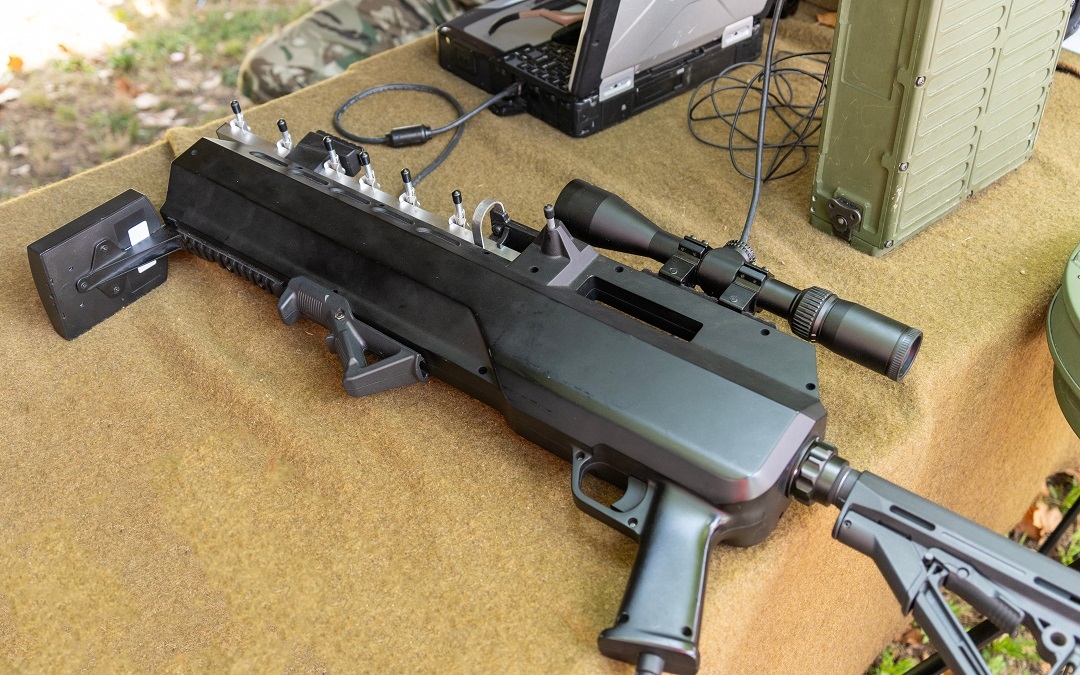Understanding Anti-Drone Technology
The growing use of drone technology has brought major progress but also security challenges, making the need for anti-drone technology increasingly important. These systems protect sensitive areas by detecting unauthorized drones using methods like radar, RF scanning, acoustic sensors, and cameras. Once a drone is identified, neutralizing it becomes the next step, making sure that potential threats are safely managed. This two-step process plays an important role in maintaining security in environments where drone threats are a growing concern.
When a drone is identified, the priority is to neutralize the threat. The main goal is to eliminate the risk without causing unintended harm or disruption. Various methods are used for neutralization, such as signal jamming, which disrupts the communication between the drone and its operator, or physical techniques like net guns and trained birds of prey. As drones become more widely accessible and their applications increase, it is necessary to protect strategical infrastructure, public events, and private property. This growing need stresses the importance of maintaining a balance between technology and security.
The Role of Detection Systems
As drones become more common, detecting them is necessary for security and privacy. Detection systems use various technologies, each with its strengths. Radar, a traditional method, tracks objects using radio waves and is useful for covering large areas. Yet, it can struggle to distinguish small drones from other objects, leading to false positives. RF scanners help by detecting the radio frequencies drones use to communicate, complementing radar in recognizing drones.
This method is highly capable in detecting drones by capturing signals between the drone and its operator, providing the most important details about its location and movement. Advanced cameras and visual tracking add another layer of detection using high-resolution imaging and algorithms. These systems, however, struggle in low visibility or with fast-moving drones. Each detection method is required for identifying and neutralizing potential threats in the changing security landscape.
Advancements in Drone Neutralization
The development of anti-drone technology has brought several neutralizing methods to address threats from rogue drones. One widely used technique is signal jamming, which disrupts communication between the drone and its operator. While powerful, it requires precision to avoid interference with other devices. Jamming can force a drone to land or return to its origin. Another method involves using nets to capture drones, either from another drone or a ground-based system, making sure the drone is neutralized and can be preserved for further investigation.
Advanced directed energy weapons, like lasers and microwaves, provide a capable way to neutralize drones by disabling their electronic systems with precision and minimal collateral damage. These technologies bring up ethical and safety concerns, particularly in populated areas, where unintended harm could happen. As anti-drone technology develops, it’s necessary to balance capability in neutralizing drones with verifying public safety and protecting individual rights. The problem is with implementing these solutions responsibly while maintaining the security of the most important areas.
Integrated Systems for Improved Security
Anti-drone technology is becoming a leading part of modern security systems, designed to manage and respond to drone-related threats. These systems combine various detection methods, such as radar, RF scanning, and visual tracking, to create a reliable strategy for detecting and neutralizing rogue drones. By working together, these technologies guarantee real-time data and situational awareness, allowing security teams to quickly recognize potential threats and take immediate action. This integration strengthens overall security, allowing competent monitoring and quick responses across large areas.
Synchronized anti-drone technology works by coordinating detection with neutralization methods. Once a threat is detected, these systems rapidly move to neutralize the drone using techniques like signal jamming, net capture, or directed energy weapons. This simplified process reduces response time, improving security and minimizing risks from unauthorized drones. Integrated systems also offer scalable solutions for protecting critical infrastructure, public events, and private property. By linking detection and neutralization, these systems strengthen security and provide peace of mind in a world increasingly filled with drones.
Future Trends in Anti-Drone Technology
Upcoming developments in anti-drone technology will be greatly influenced by the growth in artificial intelligence (AI) and machine learning. These technologies will improve detecting capabilities and accuracy of drone identification, reducing the chances of false positives. With machine learning, systems will be able to analyze large amounts of data to predict drone behavior, allowing for quicker and more impactful responses. They will become more autonomous, adapting to different environments and learning to distinguish between potential threats and harmless drones.
This will safeguard faster decision-making and better protection of sensitive areas, while reducing unnecessary interventions. Autonomous response systems are set to transform anti-drone technology by enabling quick, precise actions without human input. With AI guidance, these systems can detect and neutralize threats in real-time through measures like signal jamming or net capture. Also, autonomous drones designed for counter-drone tasks offer mobile solutions to neutralize rogue drones in complex situations. The integration of these technologies will create a more optimal and safer approach to drone security, reducing collateral damage.


Recent Comments